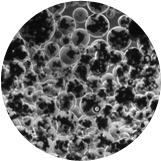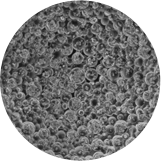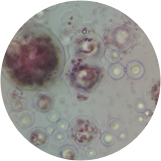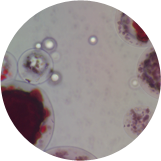Bone Micro-Encapsulation
Healing Wounds, Fractures and Internal Organ Injuries
Deep space missions will increase crew exposure to long-term microgravity and reduced gravity. Such low-gravity environments adversely affect wound and fracture healing. But the outcome of this project won't just benefit astronauts. Earth itself has its own host of problems concerning wound and fracture repair. Although tissue-engineered skin grafts are now available commercially, non-healing wound management remains a problem in burn victims, diabetic and elderly populations. Each year billions of dollars are spent treating the over 2.8 million chronic wound patients in the United States. Such an advance is synergistic to national medical needs as well as future interstellar missions.
The long-term goal of this project is to develop injectable lotion and biomaterials that are stable at room temperatures that can speed up the healing of skin wounds, bone fractures, and injury to soft internal organs (e.g., liver, spleen, lung). The project is based upon a novel microencapsulation system that traps proteins and mesenchymal or connective tissue stem cells (MSCs) in microspheres made of synthetic hydrogels. MSCs and certain pro-repair proteins demonstrably aid in repair of injured tissues like skin, muscle and bone. Furthermore, because the proteins or MSCs are entrapped within hydrogels, the body does not breakdown and clear them rapidly; they persist through the duration of wound healing. Such microspheres might be applied externally to wounds or injected for fractures and internal organ injury. MSCs microspheres can be frozen for storage; and wound repair promoting protein microspheres can be lyophilized (freeze dried).
Ronke Olabisi, PhD is an Assistant Professor of Biomedical Engineering Department at Rutgers University and member of the 100YSS Science Board.

Phase contrast image of microencapsulated MSCs after differentiation towards bone

Phase contrast image of microencapsulated mesenchymal stem cells (MSCs)

Alizarin red stain appears red in the presence of calcium. Modest stain of group with low differentiation

Intense stain of group with high differentiation
